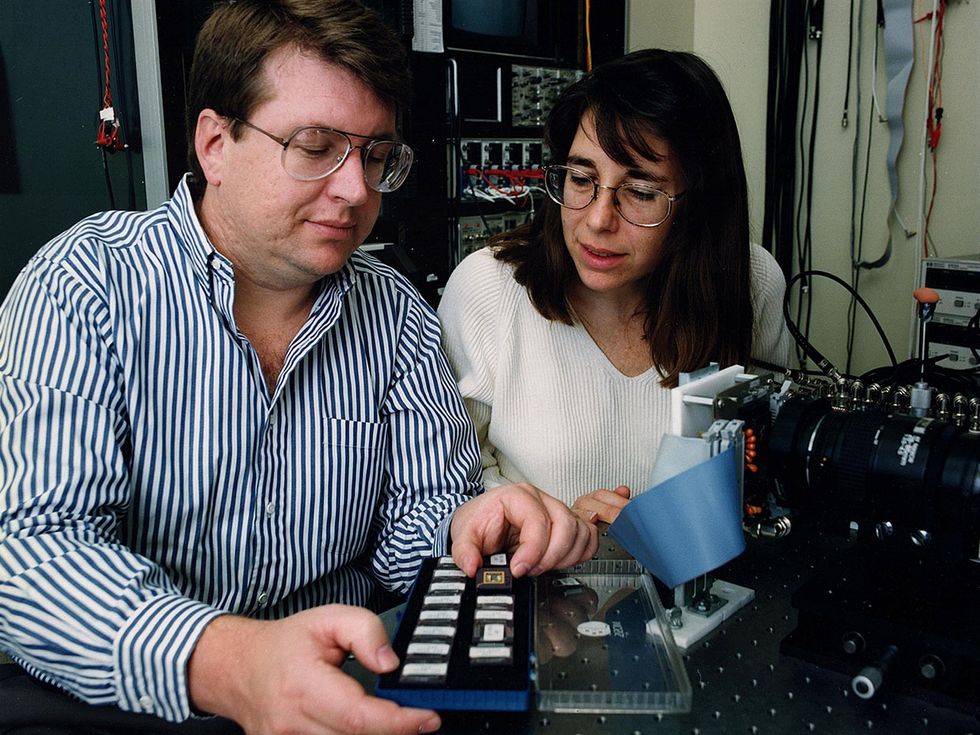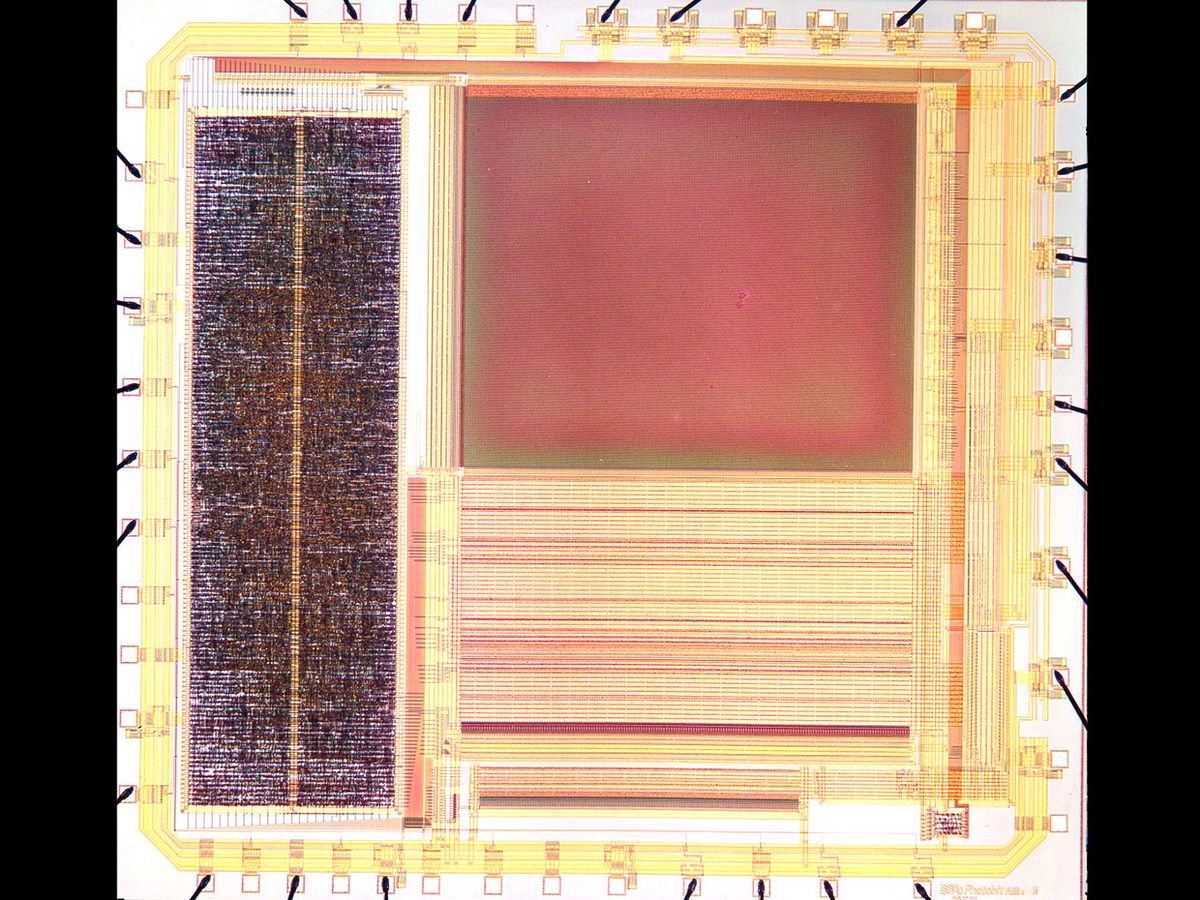PB-100 Image Sensor
Manufacturer: Photobit Corp.
Category: MEMs & Sensors
Year: 1999
Photographers have a saying: The best camera is the one you have with you. Today most of us do have a camera constantly with us, housed in a cellphone or other portable device, thanks to the CMOS image sensor, and the NASA challenge that inspired it.
In 1992, Eric Fossum was on the staff of the Jet Propulsion Laboratory, in Pasadena, Calif. JPL was responsible for the construction and operation of some of NASA’s most ambitious space probes, and that year NASA issued an intriguing demand to its staffers: Make absolutely everything about space missions “Faster, Better, Cheaper.” As chief of JPL’s image sensor research, Fossum was charged with reinventing the giant, chunky cameras aboard NASA spacecraft.
Like other devices at the time, the spacecraft cameras used charge-coupled device (CCD) technology. CCDs were the first generation of successful digital image sensors, and they used an array of minute capacitors that accumulated electric charge in proportion to the brightness of the light falling onto them. The charges were then shuffled from capacitor to capacitor across the CCD until they could be converted into voltages, and subsequently pixels, by circuitry at the edges of the array.
The technology was effective—it had launched the market for digital photography—but the shuffling process required lots of energy and a considerable number of support chips in addition to the CCD. But both problems would disappear, Fossum and his team recognized, if you could eliminate the need to repeatedly transfer charges across the imaging array.
So was born the complementary metal-oxide semiconductor (CMOS) active pixel sensor: a “camera-on-a-chip” with pixels that can each do their own charge-to-voltage conversion, significantly reducing the amount of energy and supporting circuitry needed to produce the image. Plus, CMOS sensors are made using the same material and techniques as most microprocessors and memory chips, making them easier and most cost effective to manufacture.
CMOS was faster. It was better. It was cheaper. Yet within NASA’s walls, “the response was less than enthusiastic,” Fossum says. “People were squarely in the CCD camp, didn’t believe this could be done, and didn’t want to hear about it.”
Fossum went on a road show visiting various companies outside NASA to interest them in the technology, “but after a year of banging my head against the wall trying to be the evangelist, it was clear we had to make this happen ourselves,” he says.
So in 1995, Fossum and his then-wife and JPL colleague, Sabrina Kemeny, cofounded Photobit Corp. While Fossum continued to work at JPL, Kemeny ran the company out of the family basement during her maternity leave for their second daughter. After a year, Fossum left JPL to join Kemeny at Photobit full-time.

Photobit’s first off-the-shelf product was 1998’s PB-159, but the company’s big success came the following year with the PB-100: a chip that powered the groundbreaking Intel Easy PC Camera, a webcam, and later versions of Logitech’s QuickCam.
Named for its approximately 100,000 pixels (352 by 288), the PB-100 brought videoconferencing into the mainstream—and it finally led to buy-in for CMOS from the industry at large. As investment increased, CMOS gradually took market share from CCDs, making it possible to pop inexpensive, low-power cameras into all manner of gadgets.
Today, with the ubiquity of not only cellphones and laptops but also wearables and medical devices, more than 120 new CMOS imagers are produced every second, according to market research firm IC Insights. That’s 4 billion annually, far beyond what Fossum could have expected.
“Who knew that selfies, or cat videos, were going to be so important in people’s lives?” Fossum says. “It’s fun to see someone taking a picture at the park and realize, ‘Wow, this all came from NASA technology. And I was there.’ ”
But Fossum is proudest of one particular impact. “Social justice, undoubtedly,” he says. “So many incidents have come to light—passengers being dragged off flights, people of color being mistreated by police—because someone has a cellphone camera in their pocket.”
Julianne Pepitone is a freelance journalist who reports via text, video, and television. She spent years on staff at CNN Business and then at NBC News, covering consumer tech, cybersecurity, and business. Now a freelancer, she works with an eclectic roster of clients. Beyond Spectrum, CNN, and NBC, her bylines can also be found at HGTV Magazine, Memorial Sloan Kettering, NYMag.com, Glassdoor, Popular Mechanics, Cosmopolitan, Town & Country, Thrillist, MagnifyMoney, The Village Voice, and more.



